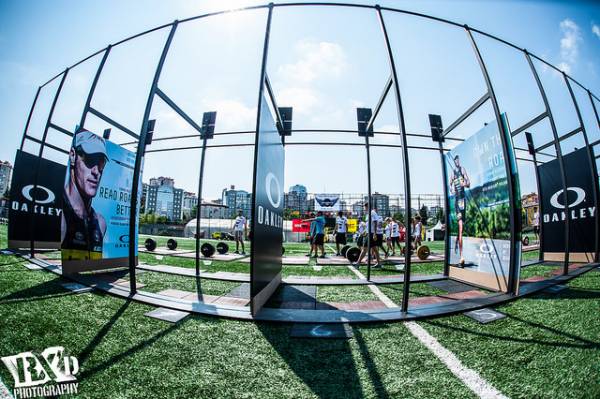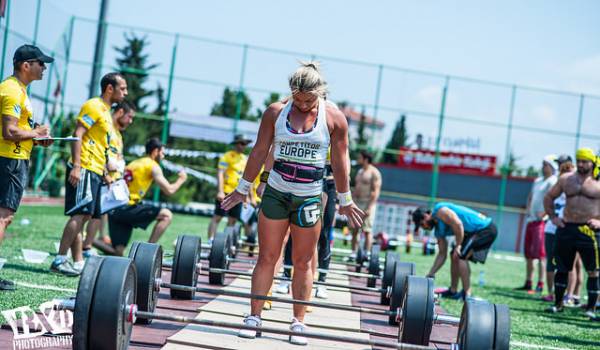You can make a great impact on your sponsorship seeking efforts by taking time to understand your reasons for getting sponsorship, what you are looking for, who you would like to be sponsored by, and what you can offer them in return.
In my sponsorship coaching, I call this “Phase 1 – Obtain” (the other two phases are “Maintain” and “Retain”). This is the phase where you decide exactly what you are looking for out of sponsorship, identify potential sponsors, develop an engagement strategy, prepare sponsorship proposal documents, and pitch your sponsorship requests.
Get ready to plan, crunch numbers, and organize before preparing your official sponsorship proposal.
The main focus of this phase is doing research and planning. Too many people create a sponsorship proposal that is basically a lengthy athlete profile and then start sending it out. But it’s important to know about your sponsors before you even think about creating a proposal, so resist the temptation to start creating that document.
Do your homework, and when it comes time to sending your proposals you’ll be confident you’re sending the right content to the right companies and in the right way.
Identifying Your Needs
Paper. Pen. Daydream. Yep, it’s as simple as that to get started. I always encourage athletes to think big. It’s not about making do with the bare minimum. It’s about painting the picture of what it would look like if money were no object and you could fully immerse yourself in your sport.
During this daydream process, consider at what you really want out of sponsorship, beyond products, services, and finance. Are you looking to increase your media profile? Are you looking for partnerships with companies who share your vision about something, such as community causes or a charity? Perhaps you’re thinking ahead and wanting to develop your professional skills and networks for a career during and after competitive sport.
“You will be amazed at how many companies you have some kind of connection with.”
I’m a massive believer in visualisation – and then taking action. Many athletes use this technique in their sport. Australian beach volleyball player Kerry Potharst visualized winning the gold medal at the 2000 Olympics, and she and Natalie Cook went on to win despite Brazil being the favorites. So, use this as a chance to imagine your life as a sponsored athlete, how great that would be, and the doors it can open up for you.
Identifying Potential Sponsors
You will be amazed at how many companies you have some kind of connection with, and chances are, your potential sponsors will be ones you are already in contact with or aligned with in some way.
Use the following categories to create your initial list:
- Brands and services you currently (or would like to) use
- Companies your friends and family are connected with
- Local businesses in your community
- Businesses that sponsor your sport, your events, or other athletes in your sport

Connect with event sponsors, particularly ones that already have connections to other athletes in your sport.
Your first list of potential sponsors may be two pages long, so while it’s important for you to identify every single potential sponsor, you will then need to go through and refine the list. Think about who you’d actually like to work with and which products, services, and brands you truly believe in and would feel proud to represent. Look at who you already have some kind of connection with, be it through a personal or business relationship or simply the fact that they create a product you have always used and wouldn’t use anything else.
Some people don’t feel comfortable asking for sponsorship from existing contacts because they think of it like asking a favor. But you will actually be offering great benefits in return for your sponsorship, so there are no favors or donations. This is a business proposal and will be a valuable investment for your sponsors. You need to believe that if you want them to believe that.
Research
Find out as much as you can about the companies you’ve identified as a good match. Get an understanding of what they’re about:
- What does their marketing activity look like?
- Do they sponsor other athletes?
- Do they participate in any corporate sporting events?
- Do they have any employee health programs?
Find out as much as you can via the Internet and your existing network. Then, get in contact with their marketing or sponsorship manager to learn any other key information to ensure your proposal hits the mark.
“This is a business proposal and will be a valuable investment for your sponsors. You need to believe that if you want them to believe that.”
If the company does social media, look for the gaps. Does it look like they could do with more or more interesting content? Do you see that their staff participate in fun runs, and maybe you could offer to deliver a kick-start training session for the lead up to their big event? Look at what they do and then ask yourself the question, “How can I activate or enhance what they are doing?”
It’s not your job to rewrite a company’s marketing plan, but feel free to think a little outside the square if there’s something you think would be valuable to them.
Creating a List of Benefits
It’s my belief and experience that your results on the sporting field have little to do with getting sponsored. It is other factors that make sponsorship a valuable investment for companies – social media, brand promotion, media coverage, verbal endorsement at events, having a brand ambassador, and a heap of other benefits you can offer.

Sponsored competitors serve as brand ambassadors during events, so good communication abilities are key.
Perhaps you’re good at public speaking and can contribute a few hours of your time during the year. Or you could offer to run a team-building session for your sponsor’s staff or to clients. Social media is brilliant when done right, so look at how you can provide your sponsor with an increased platform through your existing or soon-to-be increased networks. Get creative, step outside your comfort zone, and look for unique and valuable ways to give back to your sponsors.
Through your research you should have a fairly clear idea of what the company may be looking for, so your benefits should align with this – and, of course, should be commensurate in value with what you’re asking for from the company.
Creating Sponsorship Proposals
Make sure the focus is always on the company, not on you. Let them know why you are contacting them specifically and how it will benefit them to sponsor you. Outline your achievements and future plans. Paint the picture of just how awesome it will be to work together.
But you need to do all that in no more than six pages, and ideally only two to four. Be clear on what you’re asking for and what you’re offering. Make it as concise as possible because the aim is to get them to read the entire document.
“This feels much better and it should, because this is the thing that will stand you apart from other athletes.”
And always tailor each document to each sponsor – generic proposals are just lazy!
Use great photos and make the document look fantastic. Make it represent you and your style, and make it look professional in all ways. If you’re not good at design or writing or you don’t have any killer photos of you in action, then get help. Ask around – you’ve probably got people in your existing network who are good at this stuff and will be happy to help you.
Always Do Your Homework
What’s great about this overall process is that by the time you send your pitch, it will feel much more like a valuable offer than a request for help. This feels much better and it should, because this is the thing that will stand you apart from other athletes – the fact that you have taken the time to do the homework, think outside the box, and provide clear evidence of your commitment to the company and a belief in what they do.
Check out these related articles:
- Money Is Not an Obstacle – The Simple Path to Sponsorship
- Is Your Mindset Holding You Back From Sponsorship?
- The High Costs and Not-So-Sexy Side of Being a Pro Athlete
- What’s New On Pulse Beat Fit Today
Photo 1 courtesy of Shutterstock.
Photos 2 and 3 courtesy of RX’d Photography.






